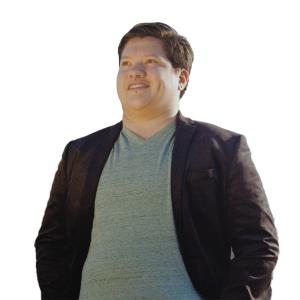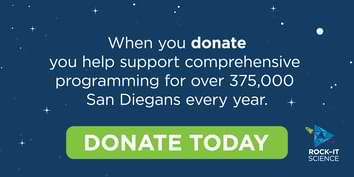Chris Garza

I was always going to be a doctor ever since my grandfather died of liver cancer when I was five. My grandfather, as well as the rest of my father’s side of the family, are Native American, although we lack tribal affiliation after a string of deaths and lost papers. In contrast to my white family in Colorado, they struggled with food insecurity, poverty, and lack of access to medical care. Impassioned to fight the structural barriers that plagued them, I majored in Public Health. I was delighted to find that my intersectional identities fell right into place in Public Health. I wrote about LGBTQIA+ and Native youth homelessness, mental health struggles, and the negative effects of stress. My thesis project overviewed a history of HIV.
At the same time, I accidentally fell in love with molecular simulation. I joined a lab in the chemistry department via a professor’s recommendation and set to studying a membrane protein called ecCLC which is responsible for E.coli’s ability to survive the acidic environment in the stomach. Proteins are tiny machines, with a shape that determines their function and dysfunction. Coming from a construction family, that made sense to me.
At a crossroads between medicine and science, I was told I should pick one. But hey, I make my own rules, so I’m doing both. I’m currently working on my PhD, using molecular simulation to study the protective shell surrounding the HIV virus. I love my work and I’m grateful for the opportunity to contribute to improved treatments against a virus that is so historically discriminated against and one that disproportionately affects people of color, LGBTQIA+ people, and people struggling with substance use. After this year, I’ll return to medical school to get more experience with patient care.
I grew up in a mostly white, mostly conservative, very hetero- and cis-normative suburb of Denver. I didn’t see people like me, and I didn’t even know what nonbinary was. When I came out as bisexual to my parents, they urged me to never speak of it for fear of its negative effects on my relationships and career. It was seven more years until I came out as nonbinary. Although I can appreciate their concern, I wish I knew someone like me existed. I wish I knew I wasn’t alone, and I wasn’t crazy. I wish I knew how supportive my PhD advisor and colleagues would be. I firmly believe I am the best version of myself and able to think more clearly and thoughtfully about science without the unease and fear lurking in the back of my mind. I finally feel like I found my place, and I don’t have to hide my queerness to be there.
Siempre quise ser médico desde que mi abuelo murió de cáncer de hígado cuando yo tenía cinco años. Mi abuelo, así como el resto de la familia de mi padre, son nativos americanos, aunque carecemos de afiliación tribal como resultado de una serie de muertes y documentos perdidos. A diferencia de mi familia blanca de Colorado, la familia de mi padre luchó contra la inseguridad alimentaria, la pobreza y la falta de acceso a la atención médica. Apasionada por luchar contra las barreras estructurales que los aquejaban, me especialicé en Salud Pública. Me encantó descubrir que mis identidades interseccionales encajaban perfectamente en Salud Pública. Escribí sobre cuestiones de LGBTQIA+ y jóvenes nativos sin techo y sobre los problemas de salud mental y los efectos negativos del estrés. Mi proyecto de tesis repasó una historia del VIH.
Al mismo tiempo, accidentalmente me enamoré de la simulación molecular. Me uní a un laboratorio en el departamento de química por recomendación de un profesor y comencé a estudiar una proteína de membrana llamada ecCLC, que es responsable de la capacidad que tiene el E.coli para sobrevivir en el ambiente ácido del estómago. Las proteínas son máquinas diminutas, con una forma que determina su función y su disfunción. Viniendo de una familia de constructores, eso tenía sentido para mí.
En una encrucijada entre la medicina y la ciencia, me dijeron que debía elegir una de las dos. Pero bueno, yo hago mis propias reglas, así que estoy haciendo ambas cosas. Actualmente estoy trabajando en mi doctorado, utilizando simulación molecular para estudiar la capa protectora que rodea al virus del VIH. Me encanta mi trabajo y estoy agradecida por la oportunidad de contribuir a tratamientos mejorados contra un virus que históricamente ha sido tan discriminado y que afecta de manera desproporcionada a las personas de color, a las personas LGBTQIA+ y a las personas que luchan contra el consumo de sustancias. Después de este año, regresaré a la facultad de medicina para adquirir más experiencia en atención al paciente.
Crecí en un suburbio de Denver mayoritariamente blanco, mayoritariamente conservador, muy hetero y cis-normativo. No vi gente como yo, y ni siquiera sabía qué era no binarie. Cuando les dije a mis padres que era bisexual, me instaron a que nunca hablara de eso por temor a los efectos negativos en mis relaciones y mi carrera. Pasaron siete años más hasta que salí como no binarie. Aunque puedo apreciar su preocupación, hubiera deseado saber que alguien como yo existía. Ojalá hubiera sabido que no estaba sole y que no estaba loque. Me hubiera gustado saber cuánto me habrían apoyado mi asesor de doctorado y mis colegas. Creo firmemente que soy la mejor versión de mí misme y que soy capaz de pensar de manera más clara y reflexiva sobre la ciencia sin la inquietud y el miedo que acechan en el fondo de mi mente. Finalmente siento que encontré mi lugar y no tengo que ocultar que soy queer para estar allí.
